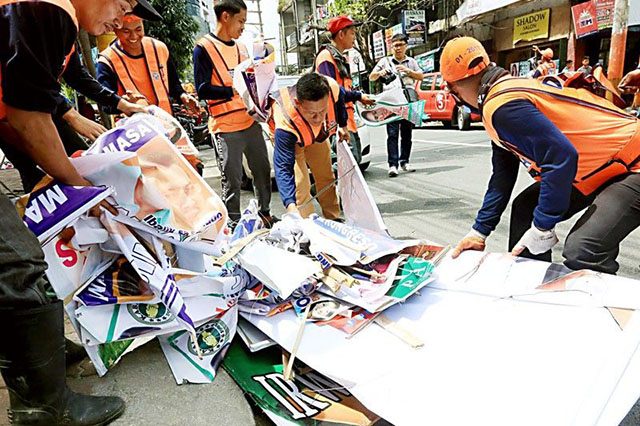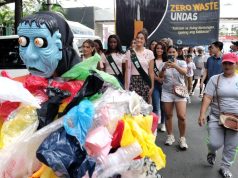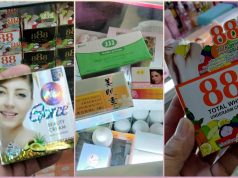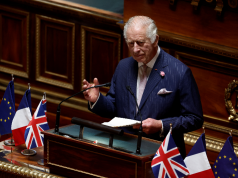
An environmental group called for electoral candidates to upcycle their campaign paraphernalia like tarpaulins into different materials instead of throwing or burning them after the midterm elections.
EcoWaste Coalition shared pictures of tarpaulins that they have creatively reused such as shopping bags, string bags, pencil cases, shoe bags and school supplies, among others.
All of them were made from tarpaulins and other campaign paraphernalia that was left in the streets after the campaigning season.
Some members of the group held out cards bearing phrases such as “Huwag sunugin” and “Think before you throw.”
Thony Dizon, the group’s chemical safety campaigner, appealed for the Filipinos to refrain from burning the paraphernalia or letting them litter the street.
“Nakikiusap kami na huwag sunugin ang campaign materials, at huwag din ikalat,” he said in an interview with a local reporter.
Some tarpaulins that were upcycled into different kinds of bags and other materials bore the faces of Makati Mayor Abby Binay, senatorial aspirant Imee Marcos, Taguig mayoral aspirant Lino Cayetano and former senator JV Ejercito.
A particular bean bag, for instance, was upcycled using 20 kilos of plastic tarpaulins, according to the group.
The group also suggested that paper-based paraphernalia can be upcycled as folders, memo pads, envelopes and bookmarks.
Upcycling is when the material is reused “without degrading the quality and composition” of its value for the next usage, according to a sustainability-centered blog.
Earlier this year, EcoWaste warned electoral candidates to moderate their use of plastic tarpaulins as these may contain toxic chemicals that could possibly “leach and contaminate the surroundings.”
“The mass production of tarpaulin banners and posters for the midterm election campaign will surely add to the plastic pollution that our country is wrestling with,” Thony Dizon said in an interview.
‘It’s not a simple solid waste issue as these popular campaign materials are laden with toxic chemicals such as cadmium that may negatively impact on our people’s health and the environment,” he added.
How tarps can be dangerous
Tarpaulins are mostly made from polyvinyl chloride (PVC) plastic that may have toxic chemicals containing cadmium, lead and phthalates.
In fact, it has been referred to as “the poison plastic” by Greenpeace, an international environmental organization.
It is commonly known as vinyl and it is one of the most commonly used types of plastic since it is highly versatile and relatively inexpensive, according to Greenpeace.
When PVC plastics are burned, they release chemicals extremely hazardous to the environment such as dioxin. It is considered one of the most toxic chemicals ever produced.
“Dioxins are among the persistent organic pollutants, or POPs, that are targeted for global minimization, if not elimination, under the Stockholm Convention on POPs, an international treaty of which the Philippines is a state party,” EcoWaste said in a report.
World Health Organization noted that being exposed to dioxins in the short-term can lead to skin lesions like chloracne and patchy darkening of the skin. It can also change how the liver functions.
Long-term exposure, meanwhile, leads to drastic impairment of the human immune, nervous and endocrine system. It can also negatively affect reproductive functions as well.









